Key in a search term below to search our website.
Key in a search term below to search our website.
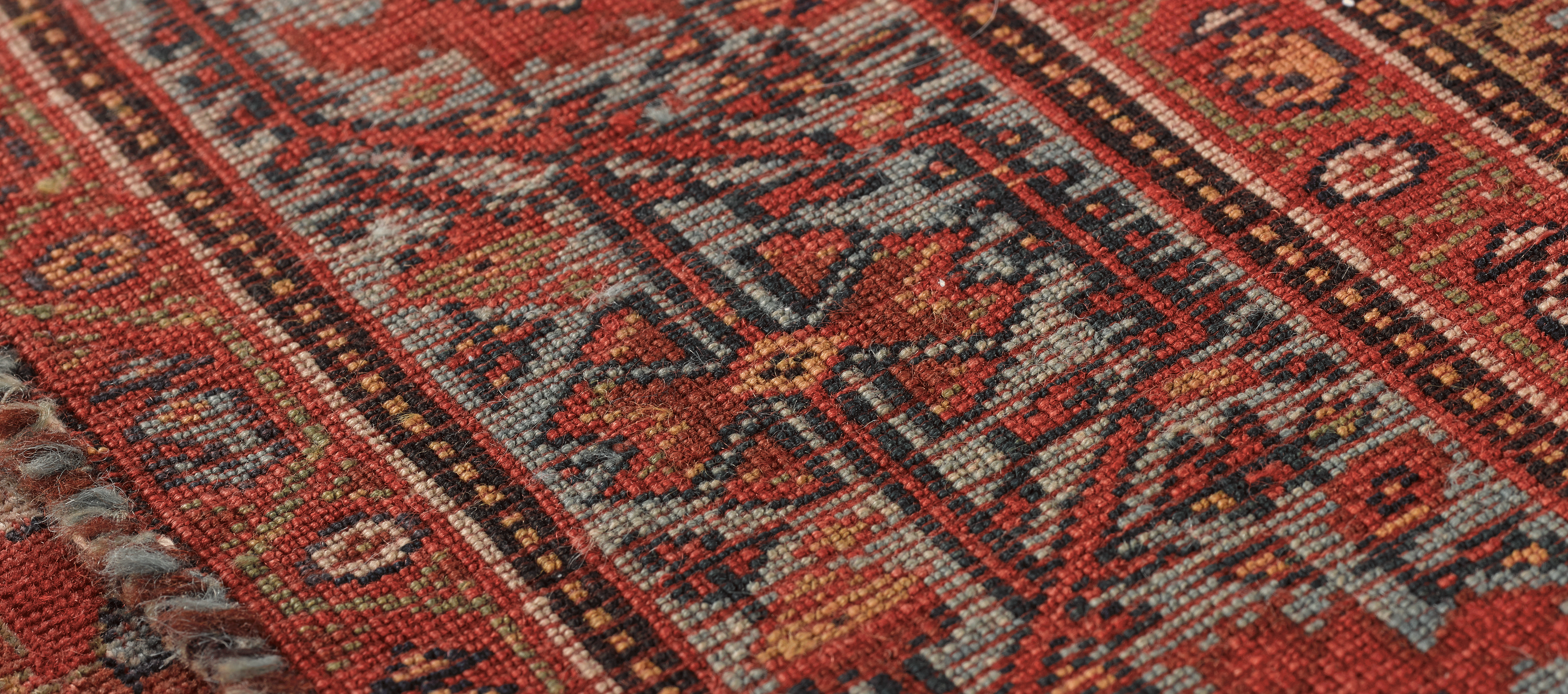
This bold and vibrant woollen pile rug once furnished the Edinburgh home of Sir Robert Murdoch Smith, the director of this museum from 1885 to 1900.
Date
c.1850-1887
Made in
Iran
Made from
Wool, cotton, natural and synthetic dyes
Dimensions
Length 244cm, width 182cm
Acquired
2014
Museum reference
Did you know?
The Glasgow-based carpet factory, James Templeton & Co., produced rugs inspired by Persian patterns to satisfy the latest consumer taste for this commodity, following the International Exhibition of Persian Art in London in 1931.
The pattern of this medallion rug is comprised of individual elements that create a unified whole. At the centre of the inner field is a large, diamond-shaped medallion with pendants attached at each end. These pendants are filled with interlacing leaves and floral motifs set against a dark blue background. Floral spandrels set against red and yellow backgrounds fill the four corners of the inner field. Together with the medallion and pendants, they overlay a repeat pattern of stylised flowers and foliage which seems to continue underneath. The field is contained within a floral border formed by a main band of a wavy tendril and flanking narrow inner and outer guard strips.
The central motif of the medallion is a rosette composed of eight petals that are formed by interchanging peony and lotus blossoms. The peonies are the larger of the two blossoms. The arrangement of the abundant red, light blue, and dark blue petals mimics the fullness of the actual peony. The petals encircle the flower's three-lobed stigma which is set in an oval-shaped centre. The interspersed lotuses are smaller in size and appear less dense than the peonies. Their blossoms are depicted with only five light blue petals that fan a rounded centre. The design imitates the cupped shape of the real lotus flower by cradling the centre in a V-shaped receptacle.
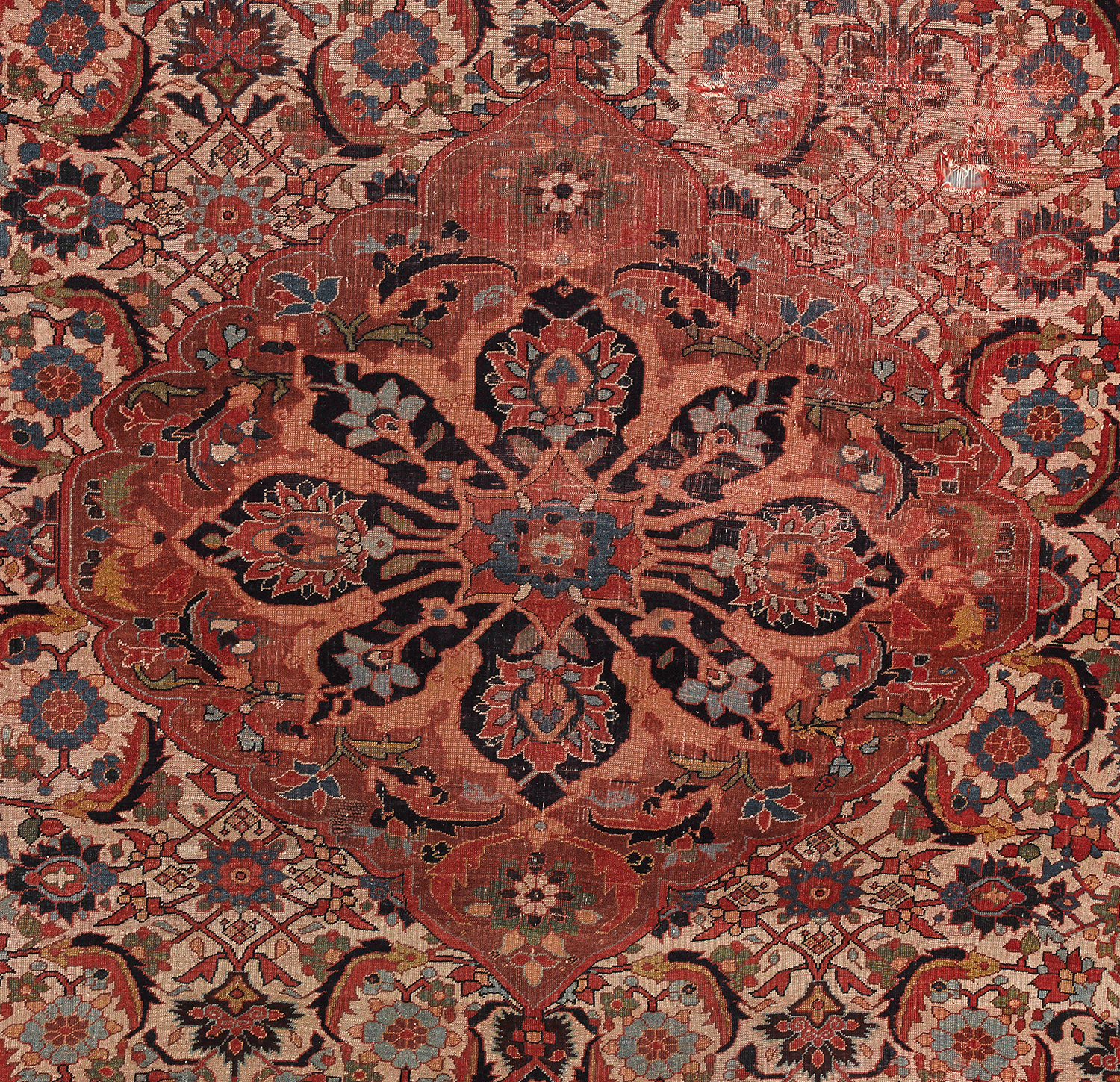
The ground of the rug is filled with a repeat pattern of foliage and flowers. Its core is a central rosette framed by linear vines in the shape of a diamond. Large peony and lotus blossoms are situated at each point and serrated leaves flank its sides. This pattern is called Herati, referring to the city of Herat in present day Afghanistan.
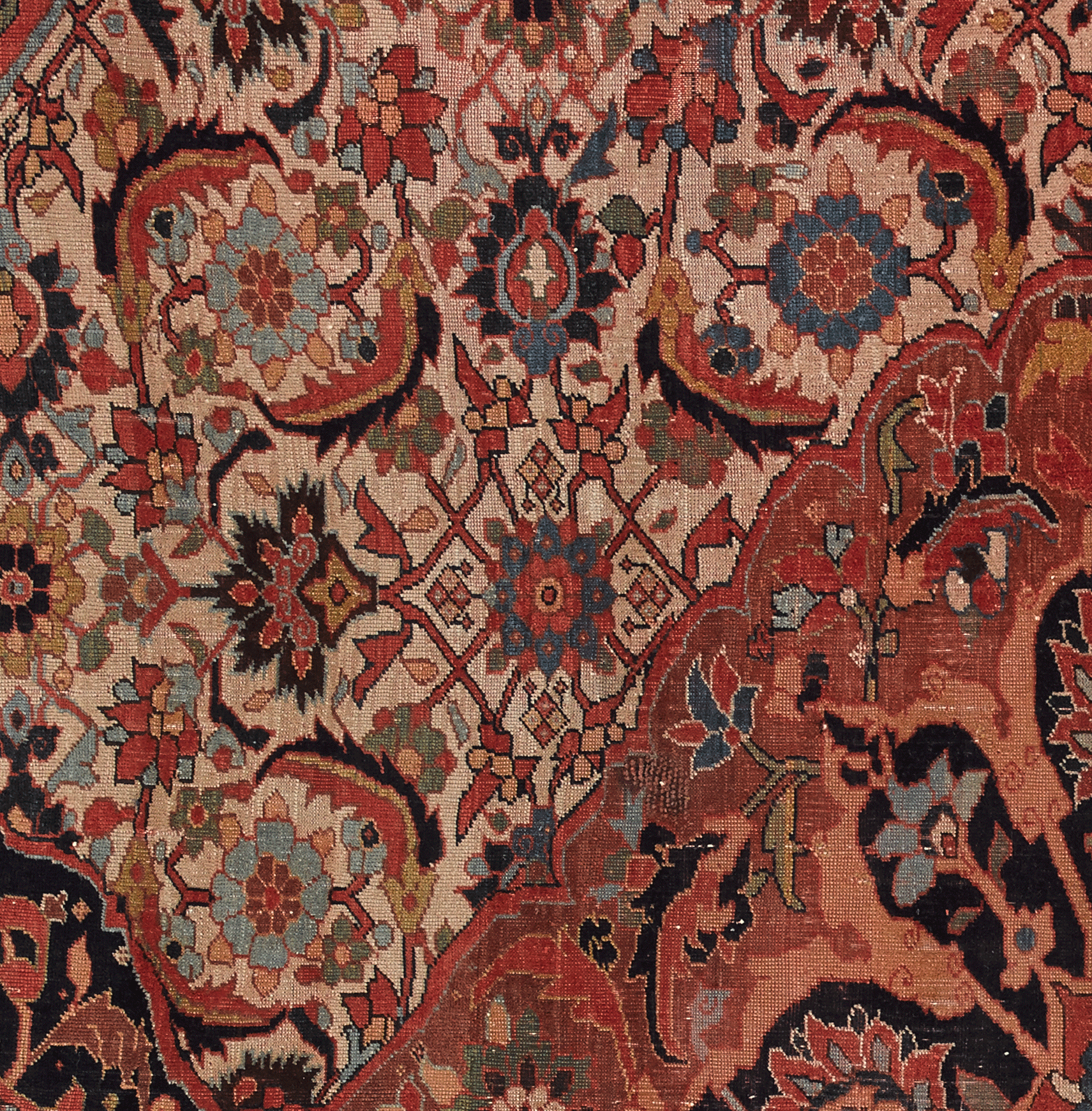
Above: The design of the Herati pattern gives the impression of continuation underneath the other elements.
The Herati pattern is also known as mahi to hos, Persian for 'fish-in-the-pond', because of the serrated leaves which are designed to resemble fish. Three bands of dark blue, yellowish-green, and red form their curved body, while the calyx-like, three-lobed base of the leaves mimics their head. The red dot at the centre indicates the eye.
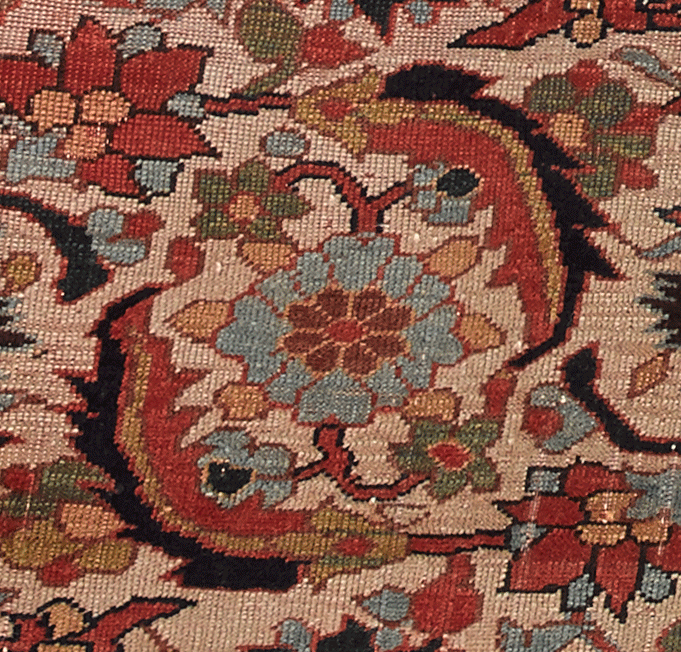
Above: An up-close look at the fish-like leaves of the Herati pattern.
Water is the element that is the basis of all life. The fish symbolises this element in Persian culture and appears across different mediums of Persian art such as ceramics and weaving. In this 13th century lustre tile, the fish motif is visualised as a fish pond at the bottom most point of the star. A flower, a reference to the tree of life, stems from its depths.
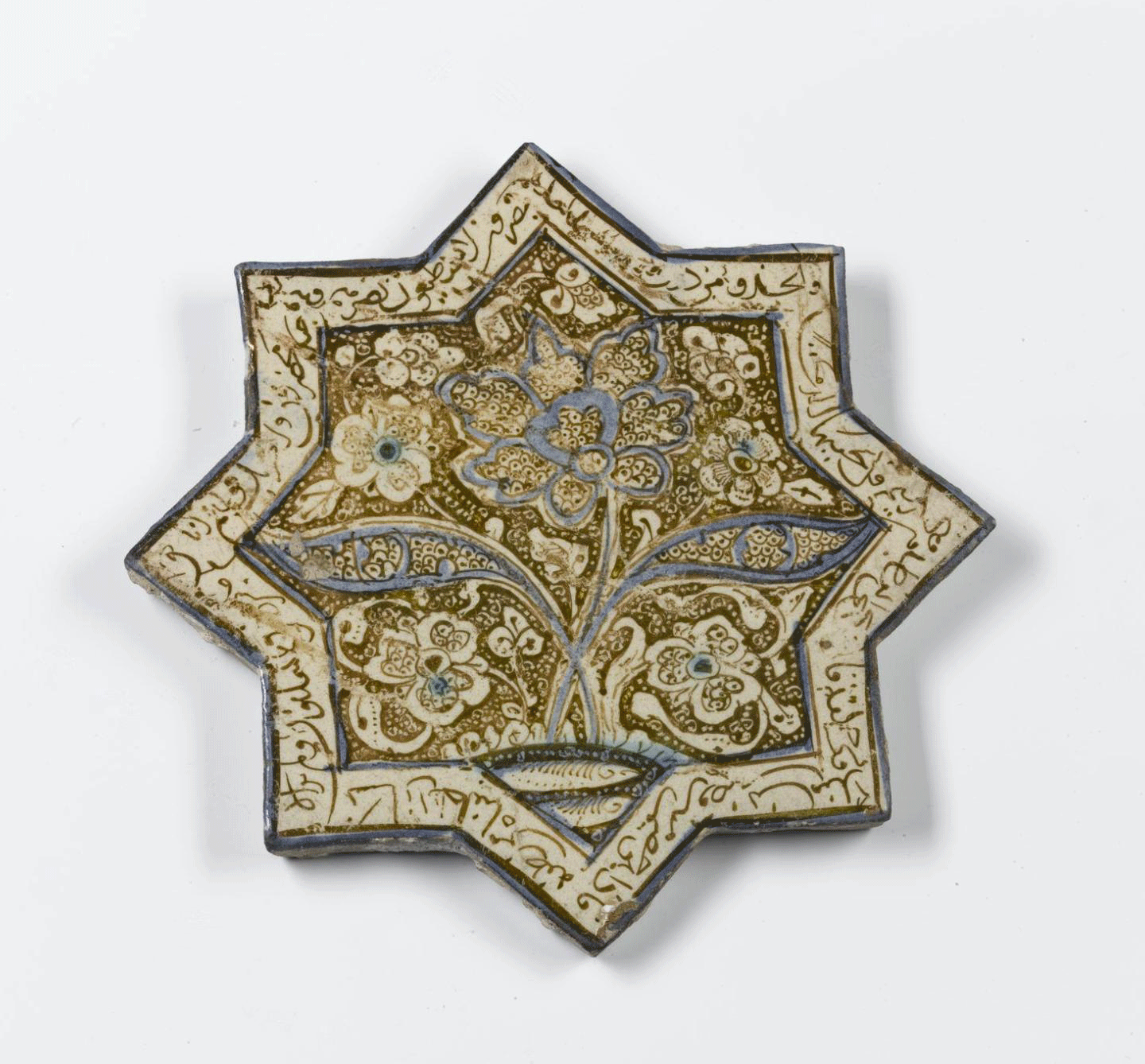
Above: A 13th -century lustre tile from Iran.
This rug is woven from white cotton and red wool, a characteristic of rugs made by the Qashqa'i, a nomadic tribe from southern Iran. However, there are other features which suggest an urban origin. The museum's rug is symmetrical in design, a characteristic that differs from traditional Qashqa'i rugs produced in a nomadic environment. These rugs were frequently asymmetrical, highly geometric, and often incorporated animals such as dogs and goats. Rugs produced in urban workshops were often less individualistic as they were based off of pre-designed patterns.
The rug entered the collection due to its association with Scotsman Sir Robert Murdoch Smith. Murdoch Smith was one of the most important nineteenth-century collectors of Persian art in the service of public institutions. He began acquiring items for the South Kensington Museum, now the Victoria & Albert Museum, while he was working for the Indo-European Telegraph Department in Iran. He later became the Director of the Edinburgh Museum of Science and Art, now the National Museum of Scotland, where he also built an important collection of Persian art. This rug was one of the few items from Iran Murdoch Smith brought back as his personal possession. It remained in his family home in Edinburgh, passing down through his descendants until it was acquired by National Museums Scotland in 2014.
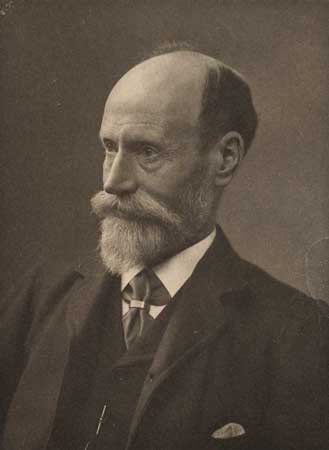
Above: Sir Robert Murdoch Smith.